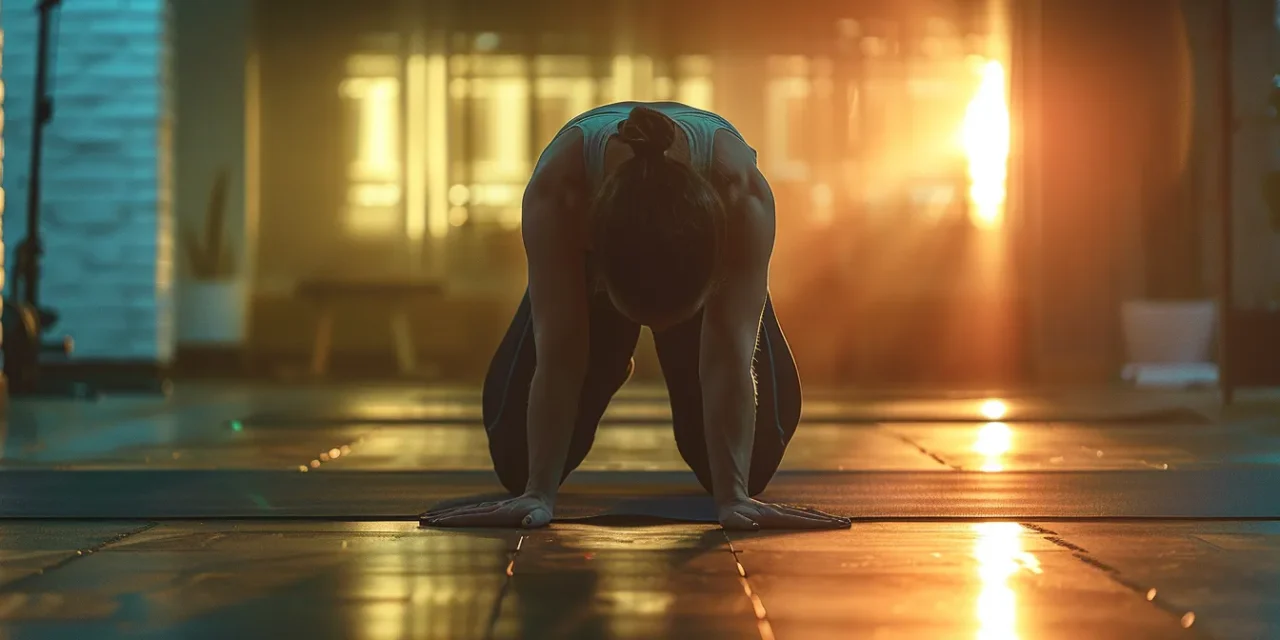Table Of Contents:
- Maximizing Your Workout With Fitness Fusion Techniques
- Key Takeaways
- Blending Cardio and Strength Training for Optimal Results
- Start With Dynamic Warm-Ups
- Integrate Interval Training
- Use Circuit Training to Keep the Intensity Up
- Incorporate Bodyweight Exercises
- Add Resistance Training for Strength
- Cool Down With Flexibility Exercises
- The Power of Yoga and Pilates in Fitness Fusion
- Begin With Yoga for Flexibility and Mental Focus
- Integrate Pilates for Core Strength and Alignment
- Combine With Aerobic Exercises for Endurance
- Use Props and Equipment to Enhance the Workout
- Include Restorative Poses for Recovery
- Practice Consistently for Holistic Benefits
- Incorporating High-Intensity Interval Training (HIIT) Into Your Routine
- Understand the Basics of HIIT
- Choose HIIT Workouts That Suit Your Fitness Level
- Plan Your HIIT Sessions for Maximum Efficiency
- Mix Different Types of High-Intensity Exercises
- Monitor Your Progress and Adjust as Needed
- Balance HIIT With Lower Intensity Recovery Days
- Leveraging Mixed Martial Arts (MMA) for Fitness Variety
- Start With Basic MMA Training for Beginners
- Incorporate Punches and Kicks for Cardiovascular Health
- Engage in Grappling and Ground Work for Strength
- Add Agility and Flexibility Drills
- Ensure Balanced Training With Recovery Techniques
- Gradually Increase Intensity and Complexity
- Cross-Training to Maximize Endurance and Agility
- Define Your Cross-Training Goals
- Choose Complementary Activities for Balanced Fitness
- Schedule Your Workouts for Optimal Recovery
- Focus on Endurance Training Sessions
- Incorporate Agility Ladders and Cone Drills
- Evaluate Your Progress and Adapt Your Plan
- Using Dance Fitness to Enhance Your Workout Experience
- Select a Dance Style That Matches Your Interest
- Combine Dance With Weight-Bearing Movements
- Add Aerobic Exercises to Your Dance Routine
- Use Music to Maintain Motivation and Set the Pace
- Integrate Flexibility and Balance Exercises
- Make It a Fun and Regular Part of Your Fitness Regimen
Maximizing Your Workout With Fitness Fusion Techniques
Exercise enthusiasts are often on the lookout for dynamic methods to boost their fitness routine and achieve comprehensive wellness. Fitness fusion presents an innovative approach by merging various disciplines like the cardio kick of taekwondo, the core-enhancing precision of pilates fusion, and the flexibility benefits of yoga fusion. By integrating these elements with dedicated stretching sessions, individuals can craft a holistic workout that addresses strength, stamina, and flexibility. Meanwhile, embracing the variety within these fused modalities keeps the mind engaged and the body challenged. Keep reading to delve into how you can revitalize your fitness journey with these fusion techniques.
Key Takeaways
- Combining cardio with strength training balances fitness outcomes
- Diverse activities like HIIT, MMA, and dance enhance overall fitness
- Regular progress tracking is crucial for continual improvement
- Adequate recovery is as important as intense workouts
- Flexibility and balance exercises improve core strength and stability
Blending Cardio and Strength Training for Optimal Results
As a dedicated advocate of comprehensive wellness, I can’t overstate the synergy between cardio and strength training. Embarking on a fitness journey is often about finding balance, and in my experience, combining different methodologies paves the way for remarkable outcomes. I encourage my clients to always begin with dynamic warm-ups, which readies the body for the intense activity to come. Integrating interval training – short bursts of high-intensity work followed by rest – not only boosts endurance but also ignites metabolism. By searching for a “fusion gym near me” on our website, you can easily locate a facility that will offer a blended approach to fitness. Moreover, circuit training methods ensure that your workout maintains a high level of intensity by transitioning quickly between exercises with minimal rest. I’m keen to show how bodyweight maneuvers and resistance routines enhance muscular strength and how a dedicated cool down with flexibility exercises contributes to a well-rounded session. This strategy greatly compleves one’s personal training goals and overall health.
Start With Dynamic Warm-Ups
Kicking off any workout, my advice always veers towards starting with dynamic warm-ups to wake up the muscles and set the stage for an effective session. In my own routine, I blend elements of yoga and fusion pilates into my warm-ups to prepare both mind and body for the upcoming exertion. This method is particularly advantageous before group fitness classes where energy levels are high and bodies need to move fluidly through a range of motions, drawing on the same principles that are the backbone of a seasoned developer writing fluent javascript – each movement, like each line of code, purposeful and building towards a seamless experience.
Integrate Interval Training
Embracing the pulsating rhythm of interval training, I advocate for its inclusion in a modern workout regimen. Courses like pilates fusion equinox marry the fast-paced nature of cardio with the muscular focus of strength training. For clients seeking a multifaceted fitness approach, the integration of intense spurts of activity, as found in interval training, with the body sculpting techniques of pilates stretched fusion, showcases just how cardiovascular and muscle work can operate in concert. These classes often yield accelerated results by challenging the group to push their limits and recover just as rapidly.
- Begin with a dynamic, heart-rate elevating warm-up.
- Transition into high-intensity intervals, maximizing calorie burn.
- Mix in pilates fusion elements to target flexibility and core strength.
- Consistently challenge the body with varied strength training exercises.
- Implement adequate rest periods to optimize muscle recovery.
- Conclude with pilates stretched fusion to lengthen muscles and prevent stiffness.
Use Circuit Training to Keep the Intensity Up
Incorporating circuit training into my workout regimes, I consistently observe the uptick in intensity that keeps clients engaged and progressing. Timed stations centered around fusion yoga and other fitness fusion exercises test cardiovascular limits while actively sculpting the body. Strategically scheduling these circuits with guidance from a personal trainer promotes continuous movement and minimizes downtime, creating a challenging yet efficient session that embodies the principles of fused fitness.
Incorporate Bodyweight Exercises
Infusing my workouts with bodyweight exercises, I’ve tapped into an energy reserve I hadn’t fully acknowledged before. Techniques like the precision of pilates, the vigor of boxing, and the flow of pilates yoga fusion not only enhance muscular endurance but also bring a balanced intensity to my routine without the need for equipment. While fusion gym prices may vary, the investment in a class that integrates these disciplines ensures a cost-effective workout, capitalizing on the body’s own weight to create resistance and shape a lean, powerful physique.
Add Resistance Training for Strength
Integrating resistance training into my clients’ workouts, I emphasize the importance of muscle activation and the role it plays in achieving a well-defined physique. By incorporating free weights, resistance bands, or even bodyweight resistance exercises, individuals can stimulate muscle growth and improve overall body strength. My tailored approach aims to help clients progressively overload their muscles, contributing to endurance and fortifying their body against injuries.
Cool Down With Flexibility Exercises
Capping off an intense session, I guide my clients through flexibility exercises to transition their bodies into a state of recovery. This practice, often incorporating elements from yoga or dynamic stretching, helps to release muscle tension and improve range of motion, crucial for maintaining long-term flexibility and preventing injury. It’s a moment of tranquil reflection that rightly acknowledges the effort exerted, allowing for a holistic conclusion to a rigorous fitness fusion workout.
Blending cardio with strength training paves the way for enhanced endurance and muscle tone, setting a solid foundation for overall fitness. Now, let’s shift focus to the dynamic duo of yoga and Pilates, where flexibility meets core strength to redefine your fitness journey.
The Power of Yoga and Pilates in Fitness Fusion

Yoga and Pilates often stand in the spotlight as keystones of a fitness fusion approach, adeptly blending flexibility, core strengthening, and mindfulness to form a foundation for a comprehensive workout regimen. I begin sessions with yoga, knowing it sets a tone of focus while gently enhancing flexibility—a precursor to more intense physical activity. We then transition to Pilates, channeling attention to core strength and alignment, which are pivotal for a well-supported and efficient body during other exercises. Marrying these with aerobic activities, I witness a notable uplift in endurance as our bodies, now supple and stable, are primed for the vigor of cardio. Introducing various props and equipment, I’ve observed their ability to introduce diversity and challenge into the routine, keeping sessions fresh and engaging. Including restorative poses towards the end is like a silent nod to the hard work done, aiding recovery and reinforcing the restorative aspect of our practice. Over time, this harmonized blend of disciplines practiced with consistency proves to be an immensely rewarding investment for holistic wellness—a true embodiment of the fitness fusion philosophy.
Begin With Yoga for Flexibility and Mental Focus
Initiating my fitness routines with yoga grants a dual benefit; it serves to not only heighten flexibility but also to cultivate an undistracted mental state that is crucial for the day’s challenges. The stretches and postures, which require concentration and poise, pave the way for subsequent exercises by establishing a zone of composure and physical readiness that is invaluable. Embracing this time-honored practice, I anchor my and my clients’ exercise sessions in a place of balance and intention, ensuring a fruitful path forward in our holistic fitness journey.
Integrate Pilates for Core Strength and Alignment
Pilates plays a pivotal role in my fitness regime by honing core muscles essential for balance and stabilization. By engaging the powerhouse of the abdomen, lower back, hips, and buttocks, this technique not only perfects posture and alignment but also primes the body to handle complex movements with grace. My clients find that their functional fitness improves markedly as Pilates lays the foundation for a strong and resilient core, supporting their overall fitness objectives.
Combine With Aerobic Exercises for Endurance
Fusing aerobic drills into my regimen bolsters endurance, acclimating my body to sustain elevated levels of exertion over time. Through a blend of heart-pumping sequences, I incrementally increase the challenge, teaching my cardiovascular system to function more efficiently. The outcome is a fortified stamina that elevates my overall fitness and supports a heightened resilience during each workout session.
Use Props and Equipment to Enhance the Workout
In my sessions, I’ve found that incorporating props and equipment into the mix can substantially elevate the training experience. By integrating stability balls, resistance bands, and foam rollers, I’ve seen clients deepen their yoga poses and Pilates exercises, which leads to improved muscle activation and a more challenging workout. These tools not only enhance the intensity of the exercises but also infuse variety and fun into the fitness regimen, keeping motivation high and results on track.
Include Restorative Poses for Recovery
Ending a vigorous workout without properly easing the body back to its resting state is akin to slamming the brakes on a speeding car – abrupt and potentially harmful. That’s why I integrate restorative poses at the close of every session, employing deep, sustained stretches to facilitate muscle recovery and decrease the risk of post-exercise soreness. This deliberate slowdown allows the heart rate to return to baseline, capping off the day’s hard work with a practice that respects and rejuvenates the body.
Practice Consistently for Holistic Benefits
Steadfast adherence to a fitness routine that includes both yoga and Pilates offers profound holistic rewards. Through consistent practice, the body and mind learn to operate in harmony, enhancing not only physical prowess but also mental clarity and emotional stability, which, in my experience, contribute significantly to overall quality of life.
Elevating your fitness routine calls for an infusion of intensity to keep challenging your body. Ignite your workouts by integrating High-Intensity Interval Training (HIIT) into your regimen for an electrifying change of pace.
Incorporating High-Intensity Interval Training (HIIT) Into Your Routine
Embracing High-Intensity Interval Training, commonly known as HIIT, can profoundly transform your workout regimen, providing a potent catalyst for fat loss, muscle growth, and cardiovascular health. With its quick bouts of explosive activity followed by brief rest periods, HIIT challenges your body, encouraging adaptive responses that yield substantial gains in a shorter time frame. As a fitness enthusiast, I guide my trainees to understand HIIT’s fundamentals, tailor workouts to align with their individual capabilities, and schedule sessions effectively to harness HIIT’s full potential. It’s also vital to weave a tapestry of diverse high-intensity exercises within routines, enabling a challenging yet balanced fitness journey. Tracking progress is a key aspect of staying on course, making adjustments to the intensity and duration as one’s fitness journey evolves. Moreover, counterbalancing rigorous HIIT sessions with lower-intensity recovery days is a strategy I stress for sustained growth, injury prevention, and optimal performance.
Understand the Basics of HIIT
High-Intensity Interval Training, known as HIIT, hinges on short, intense bursts of exercise followed by brief recovery periods. This method keeps the heart rate elevated, intensifying calorie burn and improving aerobic and anaerobic endurance. Through its structured alternation of effort and rest, HIIT effectively stimulates metabolism and can lead to increased fat loss over time.
Choose HIIT Workouts That Suit Your Fitness Level
When advising clients on integrating High-Intensity Interval Training (HIIT) into their fitness plans, I emphasize the importance of personalization. It’s crucial to select HIIT exercises that align with one’s current level of fitness, steering clear of pushing too hard too fast which can increase the risk of injury. Starting with shorter exercise intervals and ensuring appropriate recovery times allows for a tailored approach that gradually builds stamina and fosters a sense of achievement without overwhelming the body.
Plan Your HIIT Sessions for Maximum Efficiency
To maximize efficiency, strategically plan your HIIT workouts by pinpointing optimal times in your schedule where you can exercise undistracted and with full energy. Paying attention to your body’s rhythm, schedule HIIT sessions during your peak performance periods, ensuring you can give your all to each sprint and recover effectively before embarking on another intense round. This personalized scheduling aligns with your natural cadence and maximizes the impact of every session, propelling you toward your fitness goals with each high-powered workout.
Mix Different Types of High-Intensity Exercises
Variety is the spice of life and the fuel for a compelling High-Intensity Interval Training (HIIT) routine. To prevent plateaus and maintain enthusiasm, I regularly intersperse a combination of explosive plyometrics, speed drills, and agility training into my regimen. This diversity not only keeps each workout fresh and engaging but also ensures comprehensive development across all fitness domains.
- Incorporate explosive plyometric exercises to build power.
- Integrate speed drills to enhance quickness and reaction times.
- Include agility training to improve coordination and flexibility.
Monitor Your Progress and Adjust as Needed
In my approach to fitness, I’ve always considered the vigilant monitoring of progress to be as critical as the workouts themselves. It’s important for me to periodically review and analyze my performance data, as well as my clients’, to identify trends in improvement or areas needing more focus. These insights enable me to adjust workout variables such as intensity, duration, and even the types of exercises performed, ensuring continuous advancement and avoiding the pitfalls of stagnation and overtraining.
Balance HIIT With Lower Intensity Recovery Days
Recognizing the intensity of HIIT, I prioritize incorporating lower intensity recovery days into my regimen to avert burnout and facilitate muscle repair. This balanced approach, alternating between high-energy exertion and restorative practices, such as light jogging or yoga, ensures longevity in my fitness journey and aids in achieving peak performance consistently.
| Day | Activity | Intensity | Focus |
|---|---|---|---|
| Monday | HIIT Circuit | High | Cardio & Strength |
| Tuesday | Restorative Yoga | Low | Flexibility & Recovery |
| Wednesday | HIIT Cycling | High | Endurance & Speed |
| Thursday | Light Swimming | Low | Recovery & Joint Health |
| Friday | HIIT Kickboxing | High | Agility & Power |
| Saturday | Gentle Pilates | Low | Core Strength & Stability |
| Sunday | Active Rest | Variable | Balanced Recovery |
This schedule exemplifies how a strategic balance between intense training and ample rest can promote sustainable fitness progress.
While HIIT ignites your fitness fire, incorporating MMA can keep the flames of variety burning. Step onto the mat and discover how mixed martial arts reshapes not just your body, but also your approach to fitness.
Leveraging Mixed Martial Arts (MMA) for Fitness Variety

Diversifying my fitness regimen, I integrate Mixed Martial Arts (MMA) to sharpen not only my body but also my mental acuity. Tailoring practices to start with rudimentary MMA techniques, I welcome beginners to the world of combat sports where the foundational skills amplify fitness levels. Engaging in this diverse training, I mix punches and strikes to increase my cardiovascular health and I find grappling and floor exercises vital for enhancing muscle strength. By incorporating agility and flexibility drills, I maintain a nimble form, while recovery techniques woven throughout my routine support a balanced approach to physical exertion. I’m mindful of the need to scale up intensity and introduce more complex moves progressively, ensuring that adaptations are met with calculated challenges that safely push the boundaries of my capabilities.
Start With Basic MMA Training for Beginners
Stepping into the realm of Mixed Martial Arts as a novice requires a grounded start, where fundamental techniques form the core of early training. My approach focuses on grasping basic stances, punches, and kicks, which enables a solid foundation from which to build upon. It’s my priority to create a comfortable learning environment where beginners can develop confidence in their movements and an understanding of MMA’s physical demands without feeling overwhelmed.
Incorporate Punches and Kicks for Cardiovascular Health
Incorporating punches and kicks into my workout routine has proven to be an exceptional way to elevate my cardiovascular health. These dynamic movements demand a high level of energy expenditure, leading to increased heart rate and better endurance over time.
- Begin with proper technique to maximize the efficiency of each movement.
- Alternate between punch and kick combinations to keep the heart rate elevated.
- Gradually increase intensity and duration to continually challenge the cardiovascular system.
Engage in Grappling and Ground Work for Strength
Incorporating grappling and ground work into my fitness routine has been instrumental in building functional strength. These activities engage multiple muscle groups simultaneously, requiring both exertion and strategic maneuvering, which strengthens the body in a practical and comprehensive way.
- Utilize grappling drills to develop core stability and lower body power.
- Perform ground work exercises such as Brazilian Jiu-Jitsu for enhancing grip strength and overall muscle endurance.
- Focus on controlled movements to maximize muscle engagement and minimize the risk of injury.
Add Agility and Flexibility Drills
Integrating agility and flexibility drills into my Mixed Martial Arts training, I’ve enhanced my fluidity and range of motion, essential not just in the ring but for overall bodily health. Such drills promote rapid changes in direction and improved balance, challenging my body to adapt and respond swiftly, an undeniable benefit in both competitive settings and my daily life.
Ensure Balanced Training With Recovery Techniques
Adopting recovery techniques is imperative to mitigate the stress MMA training places on the body and to promote healing. I prioritize elements like foam rolling for myofascial release and incorporate stretching to enhance flexibility; both are cornerstones for repairing and preparing the body for its next challenge. Equally important are rest days and quality sleep – non-negotiable components for a balanced training regimen that respects the body’s need to rebuild and strengthen:
- Integrate foam rolling post-training to target muscle tightness and aid recovery.
- Incorporate regular stretching to maintain flexibility and prevent injury.
- Pay heed to the body’s signals for rest and schedule full recovery days accordingly.
- Ensure ample sleep to support muscle regeneration and overall well-being.
Gradually Increase Intensity and Complexity
As I advance through my regular Mixed Martial Arts training, I am conscious of the benefits of progressively ramping up the intensity and complexity of my workouts. It’s through a careful and measured increase in the difficulty of techniques and the energy expended that I can also elevate my capabilities, ensuring my body adapts safely while continuing to grow stronger and more efficient with each session.
Mixed martial arts shape more than just your physique; they forge resilience that fuels every corner of your workout regimen. Now, let’s shift focus to how cross-training can broaden your stamina and quickness.
Cross-Training to Maximize Endurance and Agility
Embracing cross-training is akin to giving your fitness a multifaceted upgrade, where you deliberately engage in various exercises to achieve a more balanced sporting prowess. My journey has taught me that to advance in endurance and agility, variety isn’t just beneficial – it’s necessary. Cross-training infuses this variety, and my approach to it is methodical. I focus on identifying where my fitness goals lie, be it boosting stamina for a marathon or sharpening footwork for agility-dependent sports. I carefully select activities that complement each other, providing a holistic workout that targets different muscle groups and energy systems. It’s important to space these workouts effectively to allow for adequate recovery, ensuring each session is met with rejuvenation. Tuning into the specifics, I count on the precision that endurance training sessions require, and the dynamic nature of drills involving agility ladders and cones. All the while, keeping an eye on my progress is paramount, staying adaptable in my fitness plan to align with evolving goals and performance levels.
Define Your Cross-Training Goals
Setting precise cross-training objectives is the bedrock of a successful fitness program. It’s vital for me to determine the specific athletic qualities I’m aiming to develop, whether it’s bolstering my long-distance endurance, refining my agility for team sports, or balancing my overall fitness regime. This clarity shapes the trajectory of my training, guiding my choices in activities and enabling me to align each workout with my larger fitness vision.
Choose Complementary Activities for Balanced Fitness
In the pursuit of balanced fitness, I select exercises that complement each other and address different aspects of my physical well-being: strength, endurance, flexibility, and balance. For instance, when I create a cross-training regimen, I combine swimming for low-impact cardio with bodyweight resistance exercises for building muscular endurance and strength. This strategic amalgamation not only prevents overuse injuries but also facilitates a comprehensive improvement across various areas of fitness.
- Swimming contributes to cardiovascular health with minimal joint strain.
- Bodyweight exercises like push-ups and lunges enhance muscular endurance without needing equipment.
- Yoga or Pilates classes once a week improve flexibility and balance, complementing the more intense physical activities.
Schedule Your Workouts for Optimal Recovery
A carefully curated exercise schedule is paramount to achieving optimal recovery. By structuring workouts to alternate between strenuous exercises and less intense activities, I can avoid overtraining while ensuring muscles have ample time to heal and grow stronger.
- Strenuous workouts are followed by sessions focused on mobility and stretching, fostering muscle recovery.
- Rest days are strategically placed to provide full recovery, especially after particularly demanding workouts or sequences.
- Active recovery activities, such as light cycling or walking, keep the body moving and assist in alleviating stiffness and enhancing circulation.
The careful planning of exercises across the days of the week allows me to approach each session refreshed and ready to perform at my best.
Focus on Endurance Training Sessions
Incorporating endurance training sessions into my cross-training schedule, I place a strong emphasis on exercises that progressively extend my aerobic capacity. These sessions are designed with a series of systematically escalating challenges that coax my cardiovascular system into adapting and strengthening. A typical routine might range from steady-state runs to cycling sessions, each tailored to incrementally elevate my endurance to peak levels.
- Engage in steady-state cardio exercises like running to build foundational endurance.
- Include varied aerobic workouts, such as cycling or rowing, to target different muscle groups and avoid monotony.
- Extend workout durations gradually to challenge the heart and lungs, fostering enhanced stamina and aerobic capacity.
Incorporate Agility Ladders and Cone Drills
In my tailored cross-training sessions, agility ladders and cone drills are indispensable for injecting an element of precision and nimble footwork into my routine. By navigating this gauntlet of meticulously positioned obstacles, I engage my body in complex movement patterns that enhance spatial awareness and explosive speed—a formidable conjunction that redefines agility in my fitness regimen.
Evaluate Your Progress and Adapt Your Plan
Evaluating my progress ensures that my cross-training activities are yielding the desired outcomes and directs any necessary shifts in my fitness plan. Through regular assessments, I can pinpoint achievements and isolate areas that may require more focus or a varied approach, personalizing my routine for continual improvement and plateau prevention.
| Week | Endurance Focus | Agility Focus | Adaptations Made |
|---|---|---|---|
| 1-2 | Steady-state running | Basic cone drills | Included interval training for increased stamina. |
| 3-4 | Cycling with variable resistance | Agility ladder advanced patterns | Adjusted recovery times to enhance agility session recovery. |
| 5-6 | Long-duration rowing | Plyometric exercises | Introduced yoga for better flexibility and active recovery. |
| 7-8 | Hiking on uneven terrain | Mixed martial arts for dynamic movement | Shifted to more sport-specific training for functional endurance. |
Continuous monitoring allows me to refine my cross-training strategy, ensuring that each facet of the program not only aligns with my evolving goals but also advances my overall performance.
Cross-training can amplify your endurance, but have you considered the rhythm of dance to boost your workout? Dance fitness introduces a dynamic twist, turning your fitness journey into an exhilarating dance party.
Using Dance Fitness to Enhance Your Workout Experience

Integrating dance into my fitness regimen has transformed routine workouts into vibrant and energizing experiences that I genuinely look forward to. As I delve into various dance styles that resonate with my interests and energy levels, I discover endless ways to keep my body moving and my heart pumping. I’ve learned to boost the effectiveness of dance by incorporating weight-bearing movements that promote muscle strength and bone health. To further enhance my routine, I fold in aerobic exercises that maximize calorie burn and endurance. Meanwhile, the rhythmic pulse of the music keeps me motivated, sets my workout tempo, and, frankly, makes the time fly. I haven’t neglected the importance of suppleness either, integrating flexibility and balance exercises to round out my regimen. By transforming dance into a staple of my fitness routine, I’ve not only improved my physical health but also found a source of joy in movement, making it easy to maintain a consistent and enjoyable workout schedule.
Select a Dance Style That Matches Your Interest
When I integrate dance into my workout, the first step is always selecting a style that resonates with my personal taste and fitness level. Whether it’s the graceful fluidity of ballet, the high-energy blasts of hip-hop, or the vibrant rhythms of salsa, choosing a genre that I enjoy encourages consistency and commitment to my fitness journey.
| Dance Style | Energy Level | Key Benefits |
|---|---|---|
| Ballet | Moderate | Improves posture, flexibility, and muscle tone |
| Hip-Hop | High | Boosts cardiovascular health and stamina |
| Salsa | Variable | Enhances coordination and burns calories |
By aligning my preferences with the aerobic demands of different dance forms, I not only supplement my fitness regimen but also ensure the time spent is enriching and enjoyable.
Combine Dance With Weight-Bearing Movements
Melding dance and weight-bearing motions into my routine, I’ve experienced a significant upgrade in strengthening my bones and toning my muscles. Executing pliés and jumps in ballet, or incorporating squats and lunges in hip-hop sequences, has not only made my training more holistic but it has also injected fun and creativity into my exercise sessions. The added resistance, which stems from movements against gravity, fortifies my overall conditioning, ensuring I am building a stronger, more resilient body with every beat and step.
Add Aerobic Exercises to Your Dance Routine
Integrating aerobic exercises into my dance routines elevates the cardiovascular challenge, turning each session into an exhilarating and efficient calorie-burning powerhouse. By combining dance movements with the deliberate intensity of aerobic exercises, I craft a workout that not only quickens the heart rate but also enhances stamina and respiratory capacity.
- Incorporate high knees or jumping jacks for an added cardio boost within dance sequences.
- Vary the intensity with dance moves that utilize larger ranges of motion to elevate the heart rate further.
- Alternate dance choreography with short bursts of aerobic moves to keep the tempo high and the body guessing.
Use Music to Maintain Motivation and Set the Pace
Music has become an essential aspect of my dance fitness routines, its rhythm serving as a guide for the tempo of my movements. It’s the energizing beats that fuel my drive, allowing the euphony to set a vibrant scene where my motivation peaks, and each session is filled with zest. Embracing the power of melodies, I find that they not only craft an infectious workout atmosphere but also synchronize my movements, creating a holistic and rhythmic exercise experience unique to dance fitness.
Integrate Flexibility and Balance Exercises
Incorporating flexibility and balance exercises into dance fitness not only perfects the performance of each routine but profoundly enhances my overall physical capability. Balancing on one leg during a samba or extending my limbs gracefully in a contemporary number challenges my stability and range of motion. Constantly pushing the limits of my balance and flexibility within the fluid movements of dance is a joyful test—and one that steadily builds my core strength and bodily control.
Make It a Fun and Regular Part of Your Fitness Regimen
Infusing dance into my weekly exercise routine, I’ve transformed the necessity of fitness into a highlight of my days, ensuring adherence through sheer enjoyment and anticipation. The frequency with which I engage in this rhythmic activity reinforces its status as a cherished staple, solidifying its place in my holistic wellness strategy. Dancing has truly recast workout sessions from mundane to exhilarating, making regular engagement not just a goal, but an event I eagerly await.










